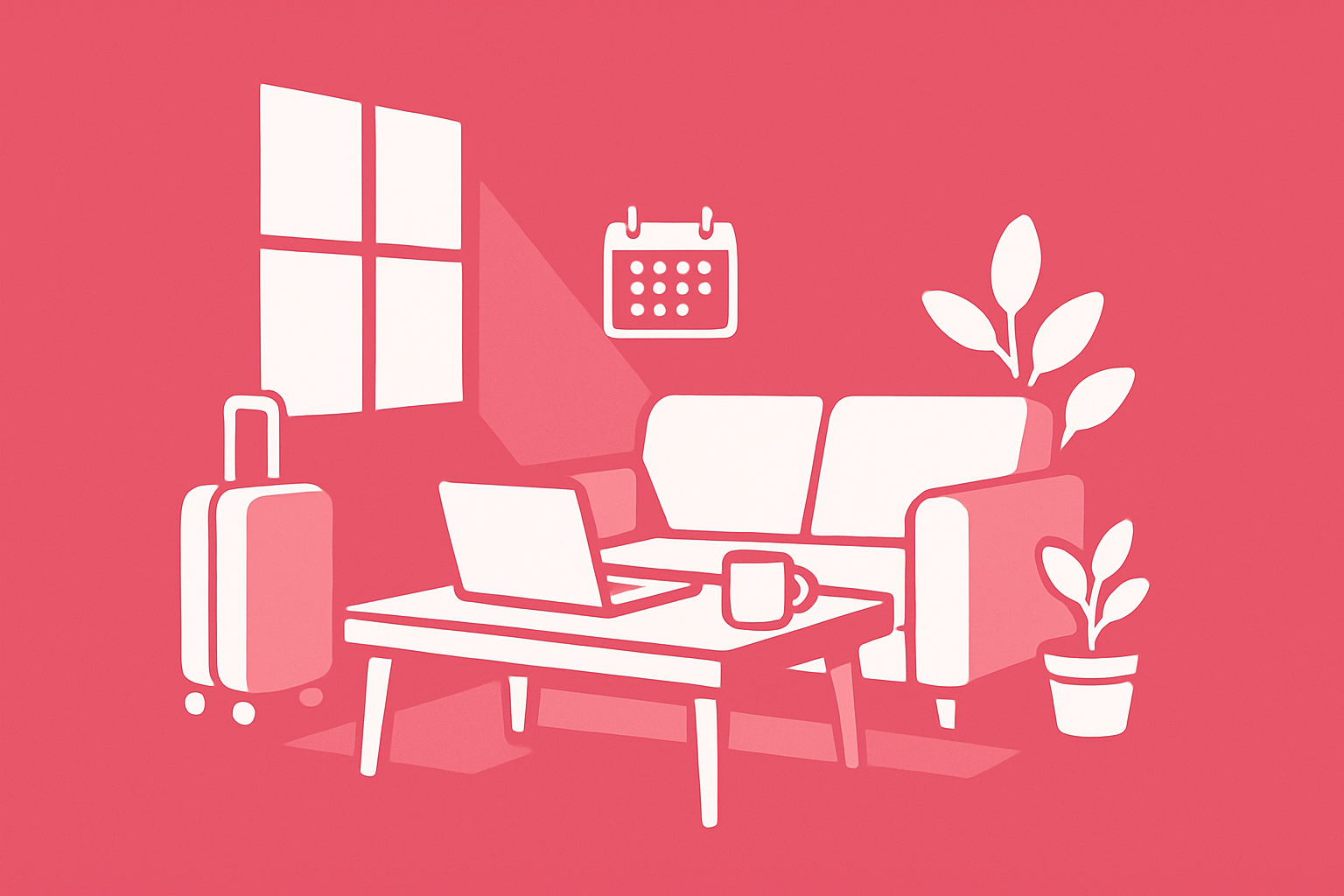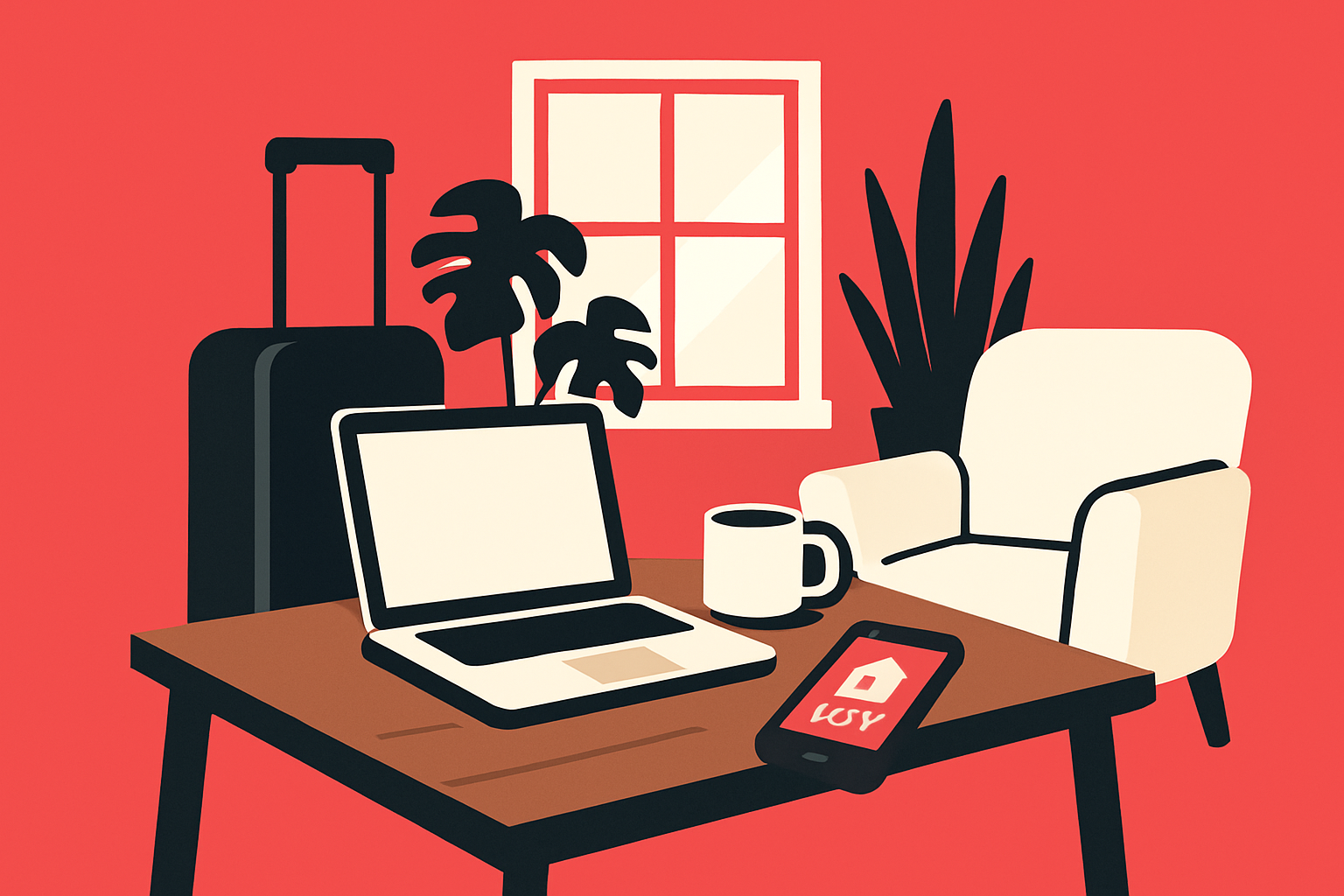|
Getting your Trinity Audio player ready...
|
Struggling to make sense of cost rentals or worried about getting the best deal in 2025? You’re not alone—navigating the world of cost rentals can feel overwhelming for beginners.
This ultimate guide breaks down cost rentals step by step, using clear explanations and the latest strategies tailored for the 2025 market. Whether you’re renting for work, study, or a fresh start, you’ll find practical advice designed for first-timers.
Expect to discover what cost rentals are, the main factors that shape pricing, a simple process to secure your ideal rental, common mistakes to sidestep, and smart tips to maximize every dollar. Ready to take control of your rental journey?
Understanding Cost Rentals: The Basics
Navigating cost rentals for the first time can feel overwhelming, especially with the variety of options available in 2025. Whether you’re a student, professional, or family, understanding the essentials of cost rentals is crucial for making informed decisions and getting the best value from your rental experience.

What Are Cost Rentals?
Cost rentals are flexible rental agreements where the total cost is transparently broken down for renters, allowing you to see exactly what you’re paying for. Unlike traditional rentals or leases, cost rentals emphasize clarity in pricing, making it easier to compare options.
A key difference is that cost rentals often bundle expenses, such as utilities and maintenance, within the overall price. This approach suits both short-term and long-term needs. For example, a short-term cost rental might cover a few weeks for a business trip, while a long-term cost rental could span several months or a year for a family relocating to a new city.
| Type | Duration | Common Use Cases |
|---|---|---|
| Short-Term | Days–Weeks | Business travel, vacations |
| Long-Term | Months–Year | Relocation, student housing |
Beginners often choose cost rentals for their predictability and ease of budgeting.
Key Components of Cost Rentals
Every cost rentals agreement comes with several standard components:
- Base Rent: The core amount for using the property.
- Utilities: Water, gas, electricity, and sometimes internet.
- Fees: Service or administrative charges.
- Deposits: Security or damage deposits.
Contracts in cost rentals spell out what’s included and any extra charges. Transparency is essential—reputable providers clearly list all costs upfront. This transparency helps renters avoid surprises and plan their budgets more effectively.
Understanding these components is the first step to making smart choices with cost rentals.
Types of Cost Rentals in 2025
In 2025, cost rentals cater to a diverse range of needs:
- Residential: Apartments, houses, condos for individuals and families.
- Commercial: Offices, coworking spaces for businesses and freelancers.
- Specialized: Student housing, vacation homes, or project-based stays.
You’ll also find options for furnished versus unfurnished units. Furnished cost rentals are popular among digital nomads and business travelers who value convenience.
Emerging digital platforms make it easier to find and book cost rentals, often offering virtual tours and instant booking features. These new models are streamlining the rental process for everyone.
Who Should Consider Cost Rentals?
Cost rentals are ideal for:
- Students needing flexible term housing
- Professionals on temporary assignments
- Families relocating for work or lifestyle changes
They’re also perfect for anyone needing a place for a defined period, such as project-based stays. Data shows a growing demand for flexible rentals as more people embrace remote work and temporary relocations. In fact, flexible rental demand has surged in recent years, reflecting a shift in how people approach housing.
Choosing cost rentals can offer stability and predictability, especially for those who value flexibility.
Market Trends Shaping Cost Rentals
Several trends are shaping the cost rentals landscape in 2025. The rise of remote work and digital nomadism has increased the need for flexible, short-term housing. Sustainability is also influencing choices, with more renters seeking eco-friendly rental options.
According to the April 2025 Rental Report, rental market growth is projected to continue, with affordability and transparency being top priorities for renters. These trends mean providers are adapting by offering greener, more flexible, and tech-enabled cost rentals.
Staying informed about these shifts helps you make better decisions and maximize your rental experience.
Factors Influencing Rental Costs in 2025
Understanding what shapes the price of cost rentals is crucial for making smart decisions in 2025. Whether you’re looking for a city apartment or a quiet suburban home, knowing these factors can help you secure the right deal and avoid surprises.

Location and Accessibility
Location is often the single largest driver of cost rentals pricing. City centers and trendy neighborhoods command higher rates due to proximity to jobs, entertainment, and transit. In contrast, suburban or rural areas typically offer more affordable options.
Consider this table comparing typical monthly costs:
| Area Type | Average Monthly Cost |
|---|---|
| Urban Center | $2,200 |
| Suburban Zone | $1,500 |
| Rural Area | $1,000 |
Being close to amenities like grocery stores, public transport, and schools can increase cost rentals prices. Always weigh commute times and convenience against your budget when choosing a location for your next rental.
Duration and Flexibility
The length of your stay directly impacts cost rentals expenses. Short-term rentals (under 3 months) usually have higher monthly rates due to increased turnover, while long-term leases often provide better value.
Flexible lease terms are gaining popularity. Many platforms now offer month-to-month or customizable rental periods, allowing renters to adapt to changing life or work circumstances. This flexibility can sometimes carry a premium, but it also saves money if you’re not locked into a contract you don’t need.
When evaluating cost rentals, compare the total price for different durations and check if flexibility aligns with your future plans.
Property Features and Amenities
Not all cost rentals are created equal. Properties with modern furnishings, in-unit laundry, high-speed internet, or utilities included usually have higher costs than basic, unfurnished spaces.
Here are common features that affect pricing:
- Furnished vs. unfurnished units
- Included services (maintenance, cleaning, Wi-Fi)
- Building amenities (gym, parking, security)
Premium amenities can significantly elevate cost rentals prices, but they may add value to your experience. Always clarify what’s included and decide which features are essential for your lifestyle and budget.
Market Demand and Seasonality
Rental prices fluctuate throughout the year based on demand. High-demand seasons—like summer in college towns or holiday periods in popular cities—often see spikes in cost rentals rates.
Vacancy rates and broader economic trends also play a role. According to the State of U.S. Rental Housing Market Report 2025, affordability challenges and shifting renter preferences are reshaping the market, leading to notable price adjustments in certain regions.
Tracking market trends and timing your search strategically can help you find better deals on cost rentals and avoid seasonal price hikes.
Legal and Regulatory Factors
Local regulations can have a major impact on cost rentals pricing. Some cities enforce rent control, limiting annual increases, while others may impose new taxes or stricter tenant protections.
In 2025, many regions are updating rental laws to address affordability and transparency concerns. It’s important to stay informed about legal changes in your target area, as these can affect both the availability and cost of rentals.
Before signing a lease, research any local policies that might influence your cost rentals agreement. This knowledge can save you money and prevent unexpected challenges.
Step-by-Step: How to Secure Your First Cost Rental
Securing your first cost rentals experience in 2025 can feel overwhelming, but breaking it down into actionable steps brings clarity and confidence. Whether you’re relocating for work, school, or a new adventure, following a proven process ensures you get the best value and avoid common pitfalls.

Step 1: Assess Your Needs and Budget
Start by clearly defining what you need from cost rentals. List your must-haves: number of bedrooms, workspace, pet policies, or proximity to public transport. Next, research average prices in your target area to set a realistic budget.
Factor in all potential expenses, including utilities, deposits, and service fees. Remember, cost rentals can vary significantly based on location and amenities. Setting boundaries now prevents stress later and helps you focus on options that truly fit your lifestyle and financial goals.
Step 2: Research and Compare Options
Search for cost rentals using trusted digital platforms, reputable agencies, and local listings. Compare several properties side by side to understand what’s included in each offer.
Look beyond just the headline price. Consider factors like lease terms, amenities, and additional costs. For a comprehensive overview of current price trends, vacancy rates, and affordability, consult resources such as the Rentometer Mid-Year Report 2025. Being thorough at this stage ensures you spot the best deals and avoid overpriced listings.
Step 3: Evaluate Contracts and Terms
Before committing to any cost rentals, carefully examine the contract. Look for key clauses covering renewal processes, deposit conditions, and penalties for early termination.
Make sure you understand your obligations and rights as a renter. If anything is unclear, ask for clarification or seek advice from a professional. Transparent agreements protect you from unexpected surprises and set clear expectations for both parties.
Step 4: Inspect the Property
Always inspect the property, either in person or virtually, before signing any cost rentals agreement. Use a checklist to evaluate:
- Cleanliness and maintenance
- Functionality of appliances
- Security features
- Signs of damage or needed repairs
Document any pre-existing issues with photos or notes. This step helps you avoid hidden costs and ensures the rental meets your standards.
Step 5: Negotiate and Finalize the Agreement
Negotiation is a normal part of securing cost rentals. Don’t hesitate to discuss rent, included services, or flexible terms. Use recent market data to strengthen your position.
Negotiation Tips:
- Highlight your reliability as a tenant
- Ask for bundled services (utilities, internet)
- Request flexibility on move-in dates or deposits
Once satisfied, finalize the agreement in writing and keep copies of all documents for your records.
Step 6: Prepare for Move-In
After signing your cost rentals agreement, organize your move-in logistics. Arrange for necessary utilities (electricity, water, internet) to be activated before arrival.
Confirm your first payment, insurance coverage, and schedule a move-in inspection with the landlord. A smooth transition sets a positive tone for your rental experience and ensures you can settle in quickly.
Step 7: Ongoing Management and Communication
Maintaining open communication is key for successful cost rentals. Respond promptly to landlord or agent messages and report any maintenance issues early.
Stay organized with renewal dates and keep all rental documents accessible. Proactive management helps you avoid disputes, ensures timely repairs, and makes your rental journey smooth from start to finish.
Common Mistakes Beginners Make—and How to Avoid Them
Navigating cost rentals for the first time can feel daunting. Many beginners stumble into common traps that quickly turn a promising rental into a costly headache. Let’s break down the biggest pitfalls and how you can sidestep them from the start.

Overlooking Hidden Costs
One of the most frequent mistakes with cost rentals is underestimating the final price. It’s easy to focus on the base rent and forget about extra expenses that add up fast.
Common hidden costs include:
- Maintenance fees (elevator, cleaning, landscaping)
- Utilities (water, electricity, internet)
- Parking and storage charges
- Insurance requirements
Always request a detailed cost breakdown before signing. Ask if the listed price includes every fee or if there are additional monthly or one-time payments. Factoring in these details from the start keeps your cost rentals budget realistic and avoids unwelcome surprises.
Ignoring Contract Details
Rushing through rental agreements can lead to expensive regrets. Many first-timers overlook crucial clauses in cost rentals contracts, assuming all terms are standard.
Watch for:
- Renewal conditions and notice periods
- Early termination penalties
- Security deposit terms and refund timelines
Take time to read every line. If something is unclear, ask for clarification or legal advice. Real-life stories abound of renters who paid hefty fines or lost deposits due to overlooked details. Protect yourself by understanding the full scope of your obligations with cost rentals before you commit.
Underestimating Market Research
Jumping on the first available option is tempting, but it rarely pays off. Beginners often skip thorough research, missing better deals or falling for inflated prices in cost rentals.
Smart renters compare multiple listings, check recent market trends, and stay alert for scams. Use reputable digital platforms and cross-check reviews. It’s also wise to stay informed about broader economic conditions that may influence pricing. For example, the Kiplinger Special Report: Business Costs for 2026 highlights factors impacting affordability, which can help guide your cost rentals decisions.
Failing to Plan for Flexibility
Many newcomers lock themselves into rigid leases, only to find their situation changes. Lack of flexibility can make cost rentals more expensive if you need to break a lease or relocate unexpectedly.
To avoid this, look for:
- Shorter lease terms or opt-out clauses
- Options to sublet or transfer your agreement
- Flexible renewal conditions
Building flexibility into your cost rentals plan gives you room to adapt as life or work evolves. This strategy can save both money and stress over time.
Maximizing Value: Tips for Cost-Effective Rentals
Unlocking the best deals with cost rentals is about more than just finding a low price. It’s about using the right tools, timing your search, negotiating smartly, and building lasting relationships. Here’s how you can maximize value every step of the way.
Leveraging Digital Tools and Platforms
Technology is your best friend when searching for cost rentals. Start by exploring popular platforms like Zillow, Apartments.com, and local rental apps. These sites let you filter by price, amenities, and lease terms, making it easier to find the perfect match.
Many digital platforms now offer virtual tours and transparent pricing breakdowns, which help you avoid surprises. Some even provide renter reviews, giving you real insights into the rental experience. By comparing multiple listings side-by-side, you’ll spot cost rentals that offer the most value.
Table: Top Platforms for Cost Rentals
| Platform | Key Feature | User Rating |
|---|---|---|
| Zillow | Virtual tours | 4.7/5 |
| Apartments.com | Price comparison | 4.6/5 |
| RentCafe | Transparent fees | 4.5/5 |
Using these tools ensures you don’t miss out on the best cost rentals available.
Timing Your Rental Search
When you search for cost rentals can make a big difference in price. Rental rates often drop during the off-season, such as winter months, when demand is lower. Landlords may offer incentives or discounted rates to fill vacancies quickly.
If you’re flexible, start looking for cost rentals about 60 days before your target move-in date. This window gives you access to fresh listings and enough time to negotiate. Use rental market reports to track seasonal trends and identify the best months for deals.
Timing your search wisely helps you secure cost rentals that fit your budget and lifestyle.
Bundling Services and Negotiating Extras
Bundling services like utilities, internet, and cleaning with your cost rentals can save you money and hassle. Many landlords are open to packaging these extras for a single monthly fee, which simplifies your budget.
Don’t be afraid to negotiate for added value. Ask if parking, gym access, or early move-in can be included at a reduced rate. Sometimes, small concessions can add up to big savings over the course of your lease.
Negotiation is key to getting the most from your cost rentals, so always discuss options before signing.
Building Long-Term Relationships
Building a positive relationship with your landlord or property manager can lead to benefits in cost rentals. Tenants who pay on time and communicate well often receive loyalty discounts or first pick on new units.
Long-term renters may also be eligible for lease renewal incentives, such as reduced rent increases or free upgrades. Staying in good standing can help you avoid extra fees and make your rental experience smoother.
Investing in relationships turns cost rentals into lasting value, making every renewal a fresh opportunity for savings.
The Future of Cost Rentals: What to Expect Beyond 2025
As the world changes, so does the landscape of cost rentals. Looking beyond 2025, exciting trends are set to reshape how we find, secure, and enjoy rental spaces. From smart technology to shifting lifestyles, let’s explore what’s on the horizon for cost rentals.
Technological Innovations
Technology is transforming cost rentals in ways that would have seemed futuristic just a few years ago. AI-driven pricing tools are making it easier for both renters and landlords to access fair, real-time market rates. Virtual tours are now the norm, allowing you to explore properties from anywhere in the world.
Smart contracts powered by blockchain are streamlining agreements, reducing paperwork, and increasing trust. This digital shift enhances transparency and convenience for everyone involved in cost rentals. Expect even more automation and seamless experiences as innovation accelerates.
Sustainability and Green Rentals
Eco-friendly living is becoming a priority for many, and cost rentals are no exception. Landlords are increasingly offering rentals with solar panels, energy-efficient appliances, and sustainable materials. This shift is not just about saving on utility bills—it’s about minimizing the environmental impact of your stay.
Green certifications and transparent reporting on energy use are likely to become standard features. As demand for sustainable cost rentals grows, so will your options for living responsibly and comfortably.
Shifts in Renter Demographics
The renter profile is rapidly evolving. Digital nomads, remote workers, and multi-generational families are all shaping the future of cost rentals. With more people seeking flexible, short-term housing, landlords are adapting their offerings to suit these new lifestyles.
Data shows a steady rise in demand for furnished rentals and flexible lease terms. Cost rentals are becoming more inclusive and adaptable, making it easier for everyone—from students to retirees—to find a suitable home.
Evolving Legal and Economic Landscape
Legal and economic changes are set to impact cost rentals significantly. New regulations may focus on tenant protections, rent controls, and fair housing practices. As governments respond to market shifts, both landlords and renters need to stay informed about their rights and responsibilities.
Economic trends, including inflation and housing supply fluctuations, will influence rental affordability and availability. Staying updated on these developments is crucial for anyone navigating cost rentals beyond 2025.
Now that you know what to look for and how to avoid common pitfalls, you’re ready to take the next step toward a smooth, hassle-free rental experience. Whether you’re planning a project, relocating for work, or just want a comfortable place to stay in Sweden, it’s all about finding a place that lets you feel at home and stay focused on what matters. Ready to put your new knowledge into action? You can browse real, high-quality options right now—start your search and See Available Homes.


